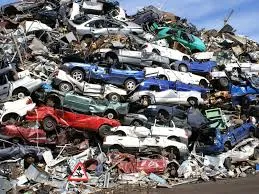

Okt . 10, 2024 20:56 Back to list
How Does a Copper Wire Granulator Work?
Copper wire granulators are essential machines used in the recycling industry to efficiently process scrap copper wire into granulated copper along with plastic insulation. These machines play a crucial role in recovering valuable materials from waste and contribute significantly to environmental sustainability. But how exactly does a copper wire granulator work? Let's delve into the process.
At its core, a copper wire granulator operates through a systematic series of stages designed to separate copper from its insulating material. The machine typically starts with the feeding of unstripped copper wire, which can vary in size and type, including communication cables, electrical wires, and more. The design of a granulator allows it to handle multiple wire sizes, making it versatile for recyclers.
Once the scrap copper wire is fed into the machine, the first step involves feeding it into a shredder. The shredder contains sharp blades that chop the wire into smaller pieces, breaking down the copper and plastic insulation into manageable sizes. This initial size reduction is crucial as it facilitates the subsequent separation process.
After the wire has been shredded, the material is conveyed to a granulation chamber. In this chamber, the shredded wire is subjected to high-speed rotation, which further processes the material. The granulator utilizes high-velocity blades that produce tiny particles of copper and plastic. The action not only reduces the size of the material but also helps separate the copper from the insulating material based on density and mass.
Next, the granulated material passes through a series of vibrating screens and air classifiers. These stages are designed to utilize gravity and air flow for separation. In the vibrating screens, the particles are separated based on size, allowing the lighter plastic materials to be removed from the heavier copper granules. The air classifiers play a vital role in this stage, as they use air to propel lighter materials away from the heavier copper, effectively isolating the copper granules.

After the separation process, the result is two distinct outputs clean, granulated copper and plastic insulation. The copper granules, often referred to as copper flakes, are of high purity, which is essential for resale in the market. Copper, being a valuable metal, can be recycled indefinitely, making it economically viable for both recyclers and manufacturers.
Once the copper granules are collected, they can be sold directly to smelters or manufacturers, where the copper will be melted down and reprocessed into new products. The plastic insulation, on the other hand, can also be recycled and repurposed into various materials, thus minimizing waste.
In terms of operational efficiency, modern copper wire granulators are equipped with advanced technology that allows for better energy consumption and enhanced processing capabilities. Many models are designed with soundproofing features to minimize noise pollution during operation, and some offer automation options for more efficient running.
One of the significant benefits of using a copper wire granulator is that it contributes to reducing environmental impact. By recycling copper, we conserve natural resources and reduce energy consumption compared to mining new copper. Furthermore, recycling helps decrease the amount of waste sent to landfills.
In conclusion, copper wire granulators are indispensable tools in the recycling industry. They work by shredding and granulating copper wire, followed by separation techniques that yield high-purity copper and recyclable plastics. By understanding how these machines function, we can appreciate their role in promoting sustainable practices and the circular economy. With the increasing importance of recycling, copper wire granulators will continue to be vital assets in managing electronic waste and recovering valuable materials.
Latest news
Troubleshooting Common Eddy Separator Problems
NewsJul.04,2025
The Role of Metal Recycling Plants in Circular Economy
NewsJul.04,2025
The Impact of Recycling Line Pickers on Waste Management Costs
NewsJul.04,2025
Safety Features Every Metal Shredder Should Have
NewsJul.04,2025
How Industrial Shredders Improve Waste Management Systems
NewsJul.04,2025
How Cable Granulators Contribute to Sustainable Recycling
NewsJul.04,2025